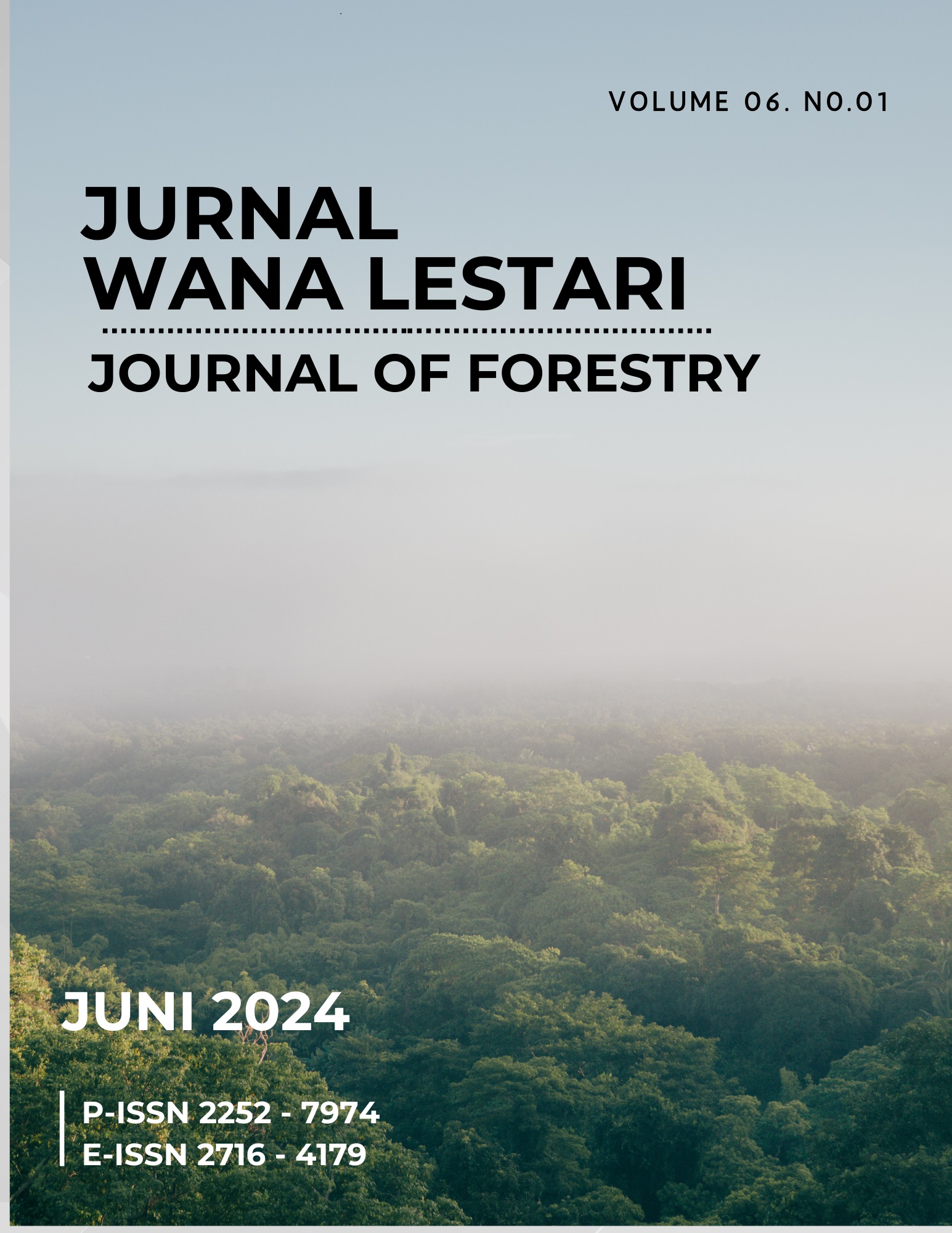Survey Karakteristik Habitat dan Pohon Sarang Lebah Hutan Jenis Apis Dorsata di Kawasan Hutan Lindung Mutis Timau
Abstract
Non-Timber Forest Products ( NTFPs) are one of the forest resources that have comparative advantages and are in direct contact with communities around the forest. NTFPs in East Nusa Tenggara Province, which has potential is honey derived from the forest honey bee Apis dorsata. This research was conducted by observation, and interviews. Forest Bees (Apis dorsata) in Nenas village always keep the same nest tree for nenas every year or period. In Nenas village there are 7 trees with 5 active nest trees and 2 inactive nest trees, which are the breeding place for Apis dorsata forest honey bees, with tree species such as Banyan (Ficus benjamin), Angkai (Albizzia chinensis), Bonak (Tetrameles nudiflora), Eucalyptus (Melaleuca leucadendra), and Cassowary (Casuarina). With a dense canopy cover of about 80% and with an average tree height of 29 m and a nest height of about 20 m, with a tree diameter of 70-150 cm, the number of clones / nest trees of 10-20. Forest beehive trees at the study site are at an altitude (elevation) of 1,285-2,500 mdpl, and a slope level of 60%, with a humid climate that rains 2000-3000 mm / year. With a climate of 140C-290C and at extreme conditions at a temperature of 90C. Conditions of temperature and rainfall greatly affect the quality of food from forest honey bees the harvesting process is still very traditional using climbing and smoke methods and traditional ceremonies which are carried out at night. Nenas Village is still included in a protected forest area managed by the Forestry Service and there is no permit for traditional honey bee to take the honey because the Apis dorsata forest honey bee tree is community property or private property which is a relic from ancient times. The age range of respondents is 30-70 years, with the highest education are high school and university graduated, and local people work as farmers and ranchers.

 Melan I Mesakh(1*)
Melan I Mesakh(1*)







